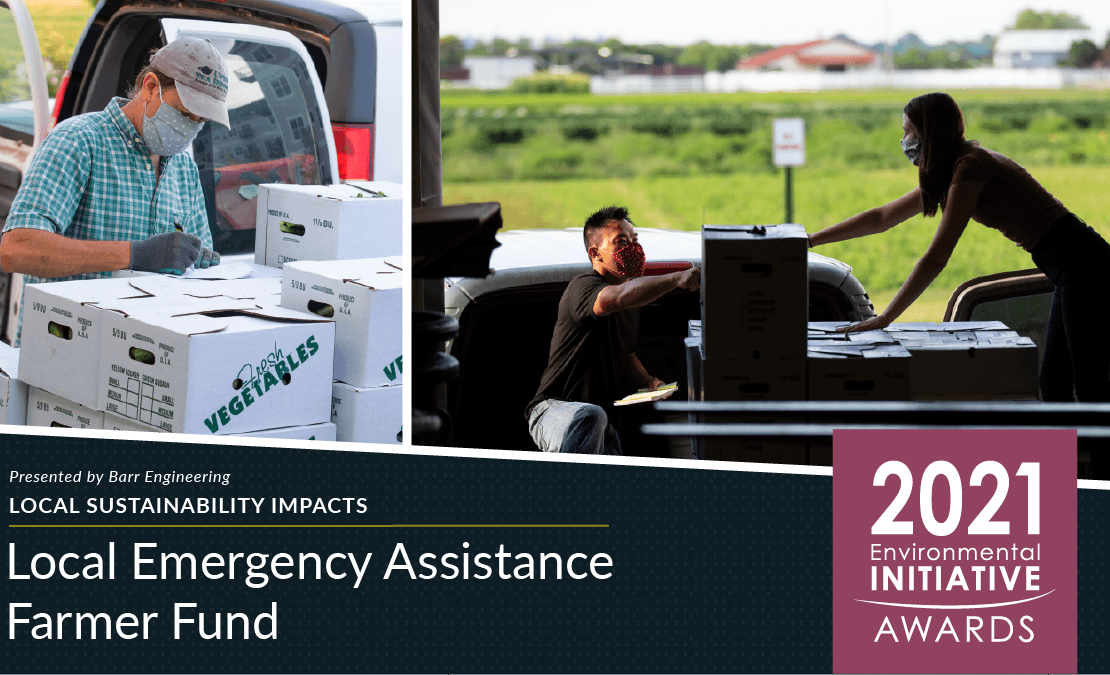Catalyzing a shift in sourcing food for hunger relief organizations

Catching up with Nikki Warner from The Good Acre was a lot of fun and filled me with hope. I am inspired by creative community leaders who are able to pivot quickly when funding and needs shift while keeping true to the mission of their organization. The Local Emergency Assistance Farmer Fund is a promise to purchase produce grown by BIPOC farmers that would otherwise be left in the field. Produce is then distributed to hunger relief partners. The program specifically supports farmers of color, while also addressing the issues of food waste and food insecurity in our local food system.
The Local Emergency Assistance Farmer Fund was recognized in May for the innovative approach used to diverting healthy, fresh food from field to people in need and paying BIPOC farmers for the produce grown.
Has the pilot since become a permanent program?
We are fortunate that the Local Emergency Assistance Farmer Fund (LEAFF) is now a program of The Good Acre. A seasonal staff person was hired for receiving produce, managing accounts, and answering questions from growers. Some changes were implemented in 2021 due to a shift in COVID-relief emergency funding which is the double-edged sword of philanthropy. We have only been able to purchase about $180,000 of produce from growers this year, which is down from the $300,000 we purchased the year before. The total purchase guarantee for each farmer was reduced from $7,500 to $4,500 but fortunately, we were still able to work with about 40 different BIPOC growers.
Just over 100,000 pounds of LEAFF produce was donated to hunger relief organizations during the 2021 growing season. This was despite the early season challenge of a late-season frost, a drought, and an early summer heat wave. Carrot seedlings didn’t germinate, new transplants had to be purchased, cucumbers were late to market, and water was scarce. Many of our LEAFF growers rent land and cannot dig wells for irrigation, so hand-watering up to eight acres added to the burden they experienced during the growing season.
Another interesting change was the decrease in number of pop-up food shelves we served. In 2020 after Lake Street was destroyed, we partnered with to get fresh produce into the community. Rebuilding allowed a return to more normal shopping patterns. However, food insecurity is still a serious problem and our BIPOC growers’ produce was shared in other communities in need, including in Wisconsin, through a partnership we have with The Food Group.
A key partner for LEAFF is the Hmong American Partnership. They offer produce at “Free Food Fridays” at the Community School of Excellence, the New Millennium Academy, and Prairie Seed Academy. The Hmong growers were able to provide healthy produce directly back to the Hmong community.
What is the most interesting connection you have made since launching the program?
Meeting new farmers and finding new places to connect produce to people has been fantastic. Building trusting relationships is possible because we are paying a fair price for the work that they do. There is a cost to growing good food and we acknowledge the value of that cost. Connecting with wholesale growers has also opened some opportunities for us as we seek to connect people to food.
An unexpected and interesting connection we have helped catalyze is the paradigm shift from the hunger relief partners who now see food justice as racial justice and that now includes growers, not solely those who have hunger needs. We are excuted to be the hub for this change.
What shape is the program taking for the future?
We are working hard to secure funding to continue this program in 2022. Our growers are still experiencing slower market days and this program is essential for reducing on-farm food waste. This is an important opportunity for growers in difficult years. Every seed was planted with the hope of finding a home. Putting all that time, energy, and labor into growing that seed should not grow into something never harvested, or passed over at market.
We are also meeting with growers to learn what they need and how they can connect with us and others in order to have successful harvests, be successful farmers, and to continue as sustainable stewards of their land.
Has the hunger need shifted in the past year?
The demand has not shifted, but the desire for hunger relief partners to responsibly source and to provide culturally appropriate food has shifted. This is a critical shift.
Do volunteer or financial donation opportunities exist for people who are interested in supporting the program?
We welcome financial support and encourage you to volunteer at your local food shelf and be an advocate for locally grown and fresh produce options. Through that you may be distributing LEAFF produce in your community during our local growing season.
What would you like us to know that we haven’t asked?
Food hubs are a resource that all communities could use. These hubs are essential to aggregate produce, offer technical assistance to growers, and connect growers to hunger relief organizations. I could talk about the value of food hubs all day long!
Nominations for the 2022 Environmental Initiative Awards will open on Wednesday, Jan. 19, 2022. The Environmental Initiative Awards recognizes those working in partnership at the nexus of a healthy environment, a prosperous economy, and an equitable society.